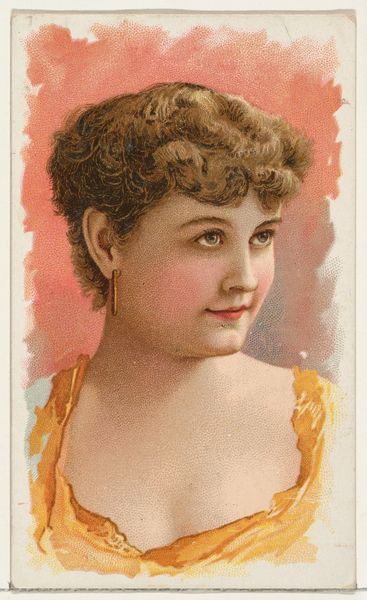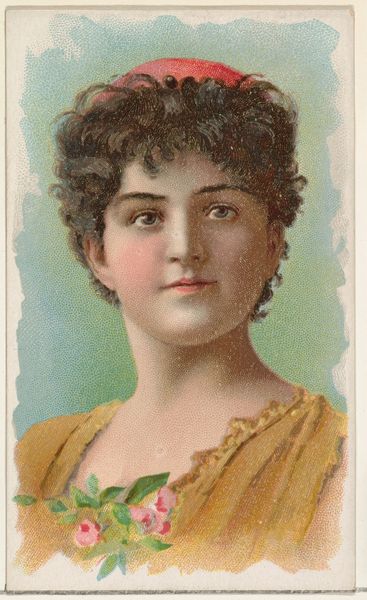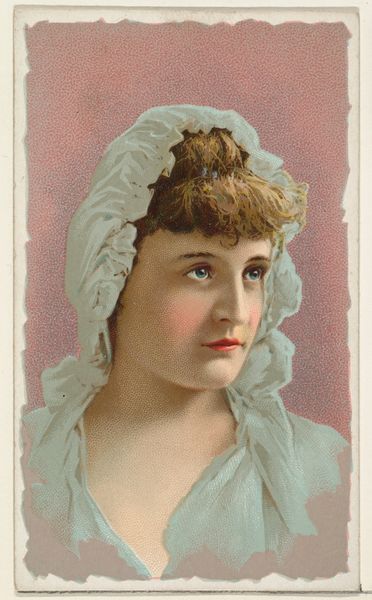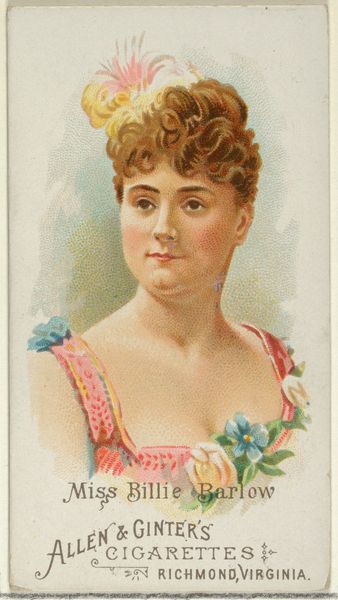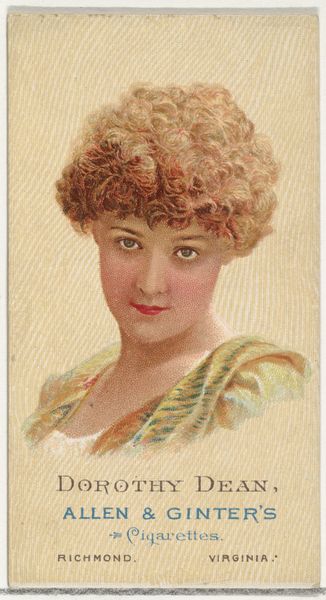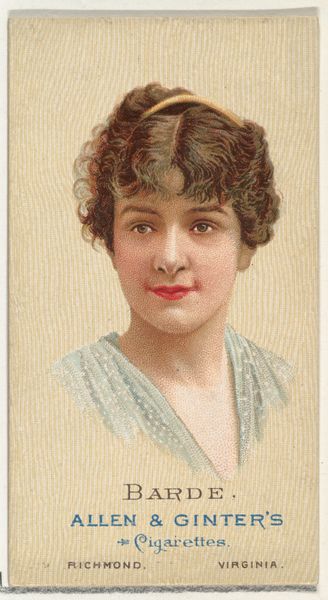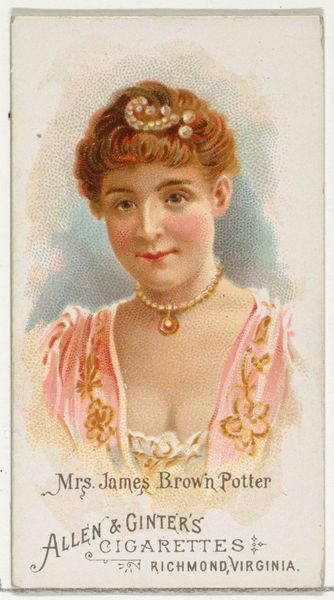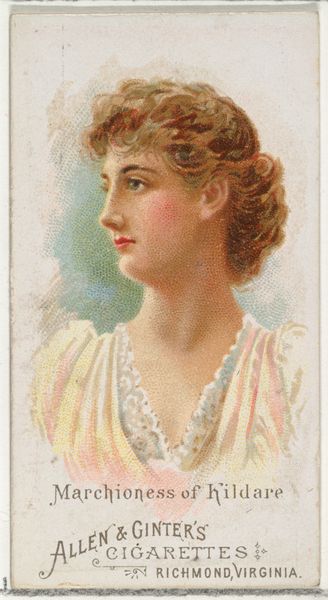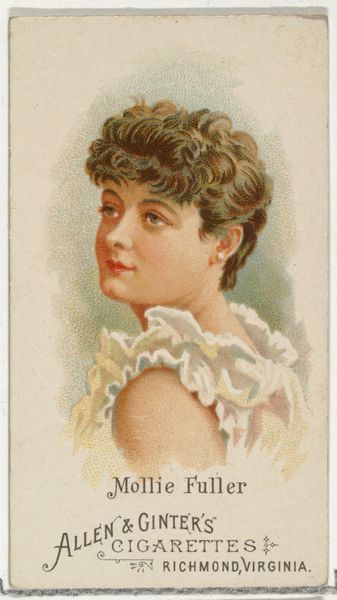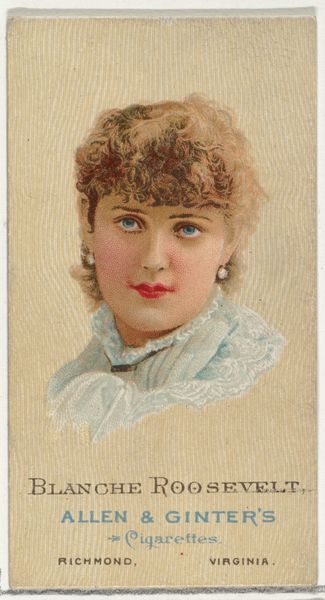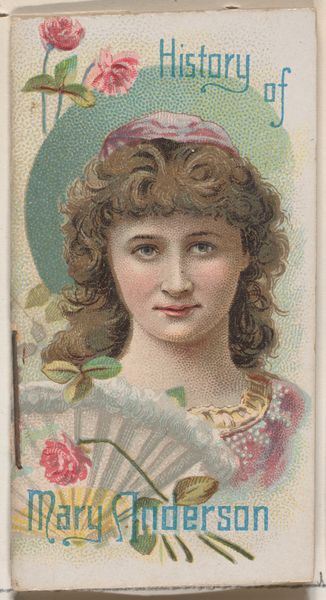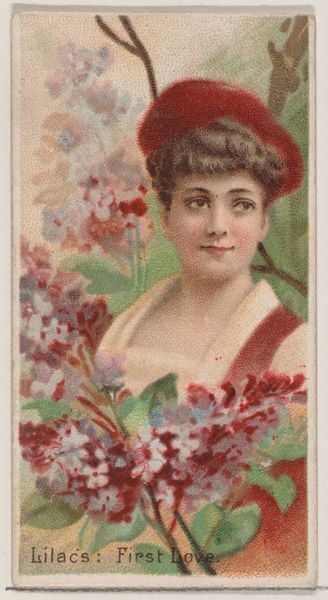
Actress wearing blue sleeveless bodice with red flower at neckline, from Stars of the Stage, First Series (N129) issued by W. Duke, Sons & Co. to promote Honest Long Cut Tobacco 1890
0:00
0:00
drawing, print
#
portrait
#
drawing
# print
#
figuration
#
portrait drawing
#
realism
Dimensions: Sheet: 4 3/16 × 2 1/2 in. (10.6 × 6.4 cm)
Copyright: Public Domain
This color lithograph promoting Honest Long Cut Tobacco depicts a stage actress in a blue bodice adorned with a red flower, made around the turn of the century. Consider the flower at her neckline, a seemingly simple detail. Flowers, throughout art history, are rich with meaning. Think of Botticelli’s "Primavera," where flora symbolizes fertility, growth, and the ephemeral nature of beauty. Here, the red flower serves as a focal point, drawing the eye and perhaps symbolizing the actress's own blossoming talent or the seductive allure she projects on stage. This symbol isn't static. In earlier Renaissance portraits, flowers held religious significance, but by the 19th century, as seen here, they often represented more secular ideals of beauty and romantic love. It’s fascinating how such motifs resurface, transformed by the currents of time and cultural context, yet still carrying echoes of their past. These echoes resonate deeply within our collective memory, stirring subconscious associations with beauty, desire, and the transient nature of life.
Comments
No comments
Be the first to comment and join the conversation on the ultimate creative platform.
